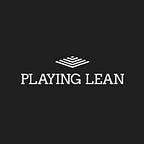What is the risk iteration path?
If you’re using the Lean Canvas, you might have spotted two small boxes in the lower left corner: “Canvas fill order” and “Risk iteration path”. Not all versions of the Lean Canvas have these two boxes, but the concepts are useful nonetheless. Let’s zoom in on the risk iteration path in this post.
The risk iteration path is a proposed sequence of testing to validate your business model hypothesis as laid out in the Lean Canvas. It’s divided into product risk, customer risk and market risk. The concept was introduced by Ash Maurya.
Let’s assume that you have already filled in your Lean Canvas. You know you’re supposed to start testing, but where? The risk iteration path gives you some guidance.
Product risk
The blue circles suggest a path for testing risk related to getting the product right.
- Problem. Do you have a problem worth solving? Testing ensures that you end up with a list of problems that resonate with customers. It’s important to have the right perspective and look at the problems from a customer’s point of view. A good tool to do this is the Problem Interview .
- Solution. Continue by testing your defined Minimum Viable Product (MVP). The Solution Interview is a good tool for this. You start out by building a “demo”, something that makes a future product come alive for customers without actually building it. As you go through the interviews, you will learn a lot from customers’ reactions — especially when you ask them to sign up and pay!
- Unique Value Proposition. When you are sure about the set of features for your solution, it’s time to build that MVP and test it at a small scale. This is where you try to sell your solution face to face to your early adopters. In the words of Ash Maurya: “If you can’t convert a warm prospect in a 20-minute face-to-face interview, it will be much harder to convert a visitor in less than eight seconds on your landing page.” *Maurya, Ash. Running Lean: Iterate from Plan A to a Plan That Works (Lean (O’Reilly)) (p. 127). O’Reilly Media. Kindle Edition. Take customers through your solution step-by-step and use the learning to refine the features, the positioning and the pricing.
- Key Metrics. When you are satisfied with the small scale testing of the MVP, you can roll it out to a bigger audience. This is where you monitor your key metrics and adjust accordingly. Pirate metrics <link to our blog post> would be a good place to start.
Customer risk
The green squares represent risks relating to building a path to customers.
Customer Segments. Who are you solving the problem for? Problems and customer segments come in pairs, so testing and iterating on this is key from day 1. In general, you will need to work on this through all kinds of testing. Early Adopters. When working with customer segments, you will start identifying your early adopters. Who has the most acute pain? Who would be most eager to try something new to solve their problem? The perfect early adopter would be what Steve Blank refer’s to as an earlyvangelist — a combination of early adopter and evangelist.
Channels (outbound). Now you must figure out how to reach your customers. It’s easiest to start with outbound channels. Cold calls, Facebook Ads, search advertising or trade shows. Test your way to get the lowest customer acquisition cost.
Channels (inbound). As soon as you can, start experimenting on your inbound channels. This could be anything from your SEO strategy to enhancing your social media presence, but the aim should be to significantly lower your customer acquisition cost in a scalable way.
Market risk
The orange hectagons represent the risk that you’re not able to charge enough for your product to make your business go around.
- Existing Alternatives. Working with customers to find existing alternatives will give you a lot of insight, both on the importance of the problem you want to solve for customers and their current willingness to pay for it. Have a look at our post on Existing Alternatives for a deeper dive.
- Revenue Streams. As early as possible, start testing your pricing hypothesis. Do this with verbal commitments or letters of intent before you have something to sell. The feedback will be very valuable.
- Revenue Streams. Once you have an MVP, it’s time to actually charge your customers. How do they behave? Early on is a good time to find price elasticity by setting prices up or down and experimenting with various pricing models.
- Cost Structure. As the shape of your business model becomes clear, you’ll need to iterate on the cost structure that will make your business profitable.
That’s it. We can show you the path, but we can not walk it for you. Get out of the building and start testing.
In our Business Modelling Facilitator training we go through the Business Model Canvas and Lean Canvas. We take you through each of the blocks of the two tools, and explain the structure and relationships of the canvasses. We also compare the tools conceptually and discuss which tool is preferable in different settings.
Originally published at https://www.playinglean.com.
